The Francis Scott Key Bridge in Baltimore collapsed on March 26 after being accidentally hit by a large cargo ship named the Dali. In the aftermath of this incident, rumors and inaccurate information emerged in both Chinese and English media outlets, adding further confusion to the incident.
AFCL checked and investigated some of the most widespread claims and rumors surrounding the incident. Below is what AFCL found.
Did key information about the Dali before the collision go missing?
A Weibo user claimed on April 1 that U.S. authorities said they were unable to obtain key positional data from the ship's voyage data recorder, also referred to as a black box, in the minutes leading up to the ship's collision with the bridge.
But this is misleading. Although motion sensors on the ship did stop briefly for about a minute in the time leading up to the collision, the National Transportation Safety Board, or NTSB, was still able to obtain audio of steering commands and rudder movements recorded by the black box during that time.
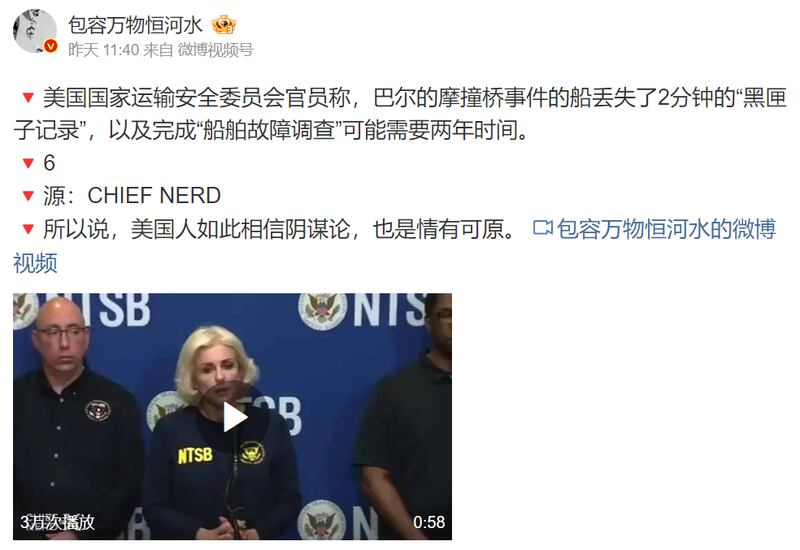
Marcel Muise, the NTSB chief investigator for the incident, noted in a report issued by CNN that the ship’s recorder stopped recording sensor data for about one minute at 1:25 a.m. on March 26 – about four and half minutes before the actual collision occurred.
During this time, however, audio on the ship – including rudder orders and steering commands – continued to be recorded without interruption using a backup power source.
Did CNN report that the Dali was full of Chinese goods?
Several influencers on Weibo and Douyin claimed that CNN had reported the Dali was full of Chinese goods when it hit the bridge, citing purported screenshots taken from news broadcast by the American broadcaster.
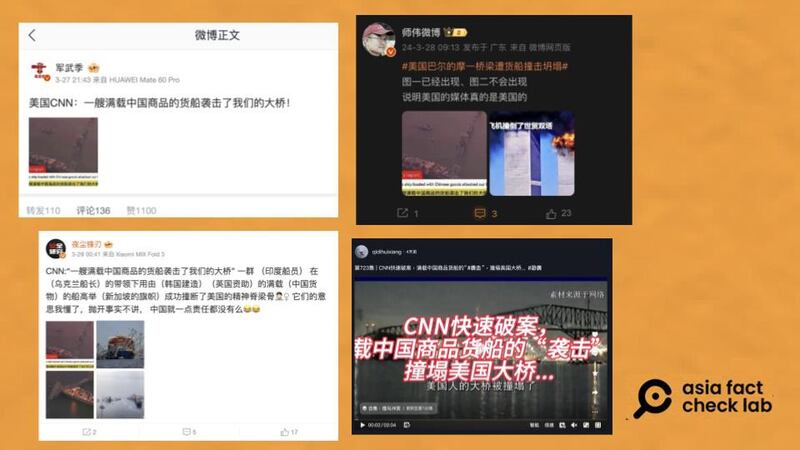
This is false. The screenshots superimposed a fake CNN headline over footage from a separate Baltimore local news outlet.
A closer look at the screenshots revealed notable differences, including font style, subtitle design, headline presentation, and the appearance of the “LIVE” marker, which diverge from CNN’s authentic standards.
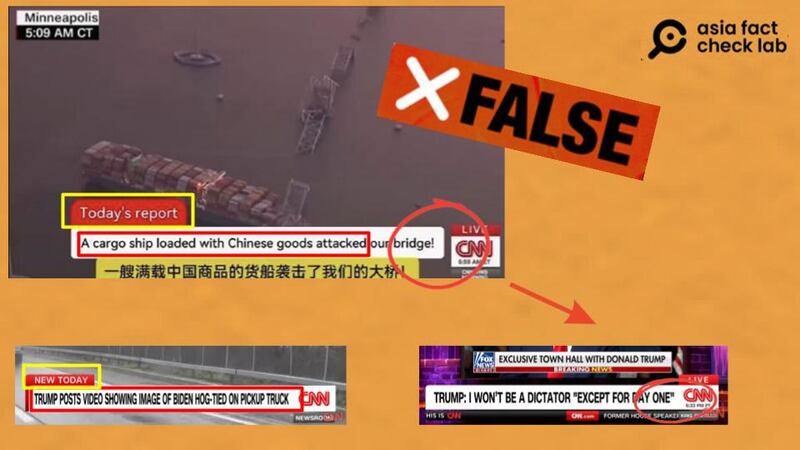
A reverse image search found the screenshots in fact were taken from WBAL-TV, a television station in Baltimore.
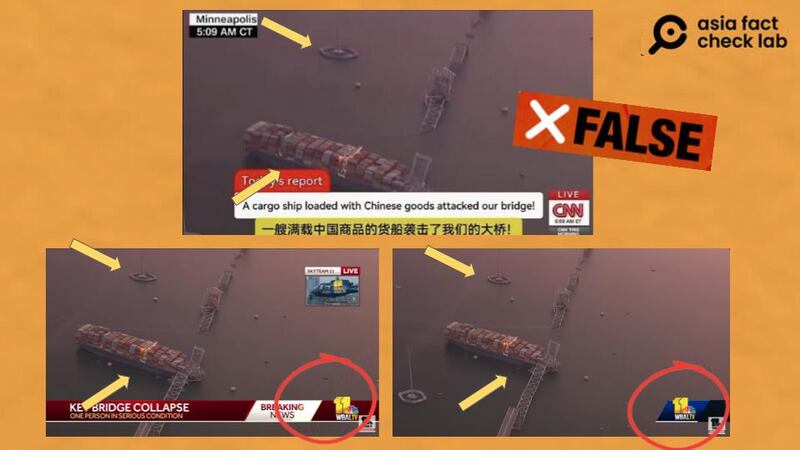
Did the US Secretary of Transportation request paternity leave after the incident?
One more widespread claim on Weibo is that the U.S. Secretary of Transportation Pete Buttigieg asked for paternity leave right after the collapse of the bridge.
A screenshot of a Chinese language news report claiming that Buttigieg announced he planned to take three months leave at an emergency news conference was attached below the post.
The report is dated to March 26, 2024, and is sourced from The Babylon Bee.
This is false. The Babylon Bee is a satirical news site, self described as "the definitive source of fake news you can trust."
Keyword searches found no credible reports or official announcement about Buttigieg’s paternity leave request.
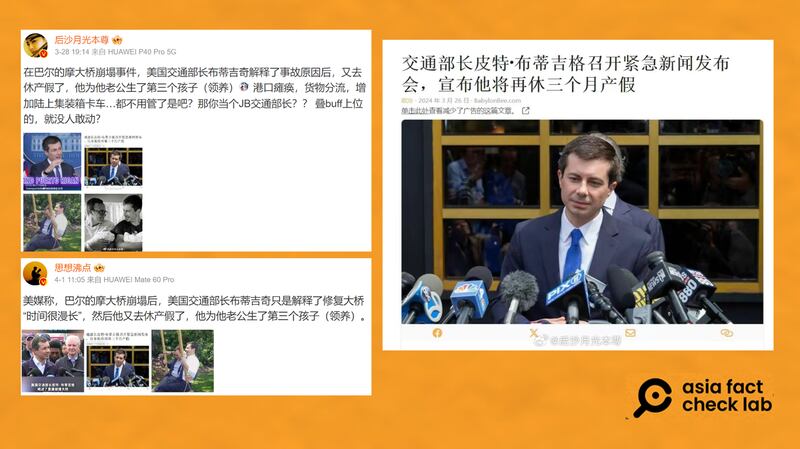
Translated by Shen Ke. Edited by Taejun Kang and Matt Reed.
Asia Fact Check Lab (AFCL) was established to counter disinformation in today's complex media environment. We publish fact-checks, media-watches and in-depth reports that aim to sharpen and deepen our readers' understanding of current affairs and public issues. If you like our content, you can also follow us on Facebook , Instagram and X .
